ANYONE who is into cars usually has a bucket list of dream machines they’d like to build. Unless you have a Jay Leno-type budget though, you need to be a talented, dedicated and supremely driven person to get anywhere close to ticking them all off – think Rod Hadfield and Norm Longfield for a couple of blokes who have gotten close.
This article on ICON 4×4 was originally published in the June 2016 issue of Street Machine
Now, picture yourself owning a 40,000-square-foot shed, filled with the best machinery and staffed with 47 talented craftsmen. Outside, you’ve got 30 or 40 unrestored and heavily sunbaked classics in various states of decay, waiting for their time in the shop. Your job is to come up with a design concept and a build plan for each of them. The cars are blasted apart, parts are ordered and you can be as hands-on or hands-off as you like. Whatever you want to incorporate into the build can be bought, modified or fabricated. The only limit is your imagination.
 That is the world Jonathan Ward has built for himself at his ICON 4×4 facility in Chatsworth, California. The only difference between Jonathan’s place and our fantasy shop is that he needs clients to buy the cars to keep the show in motion. Not bad work if you can get it!
That is the world Jonathan Ward has built for himself at his ICON 4×4 facility in Chatsworth, California. The only difference between Jonathan’s place and our fantasy shop is that he needs clients to buy the cars to keep the show in motion. Not bad work if you can get it!
As the name suggests, ICON 4×4 was founded on off-roaders, specifically 60s Ford Broncos and early Toyota Land Cruisers. That was in 2007, but these days, ICON works on almost anything and everything. So far, they’ve delivered 140 cars, with plenty more in the planning and build stages.
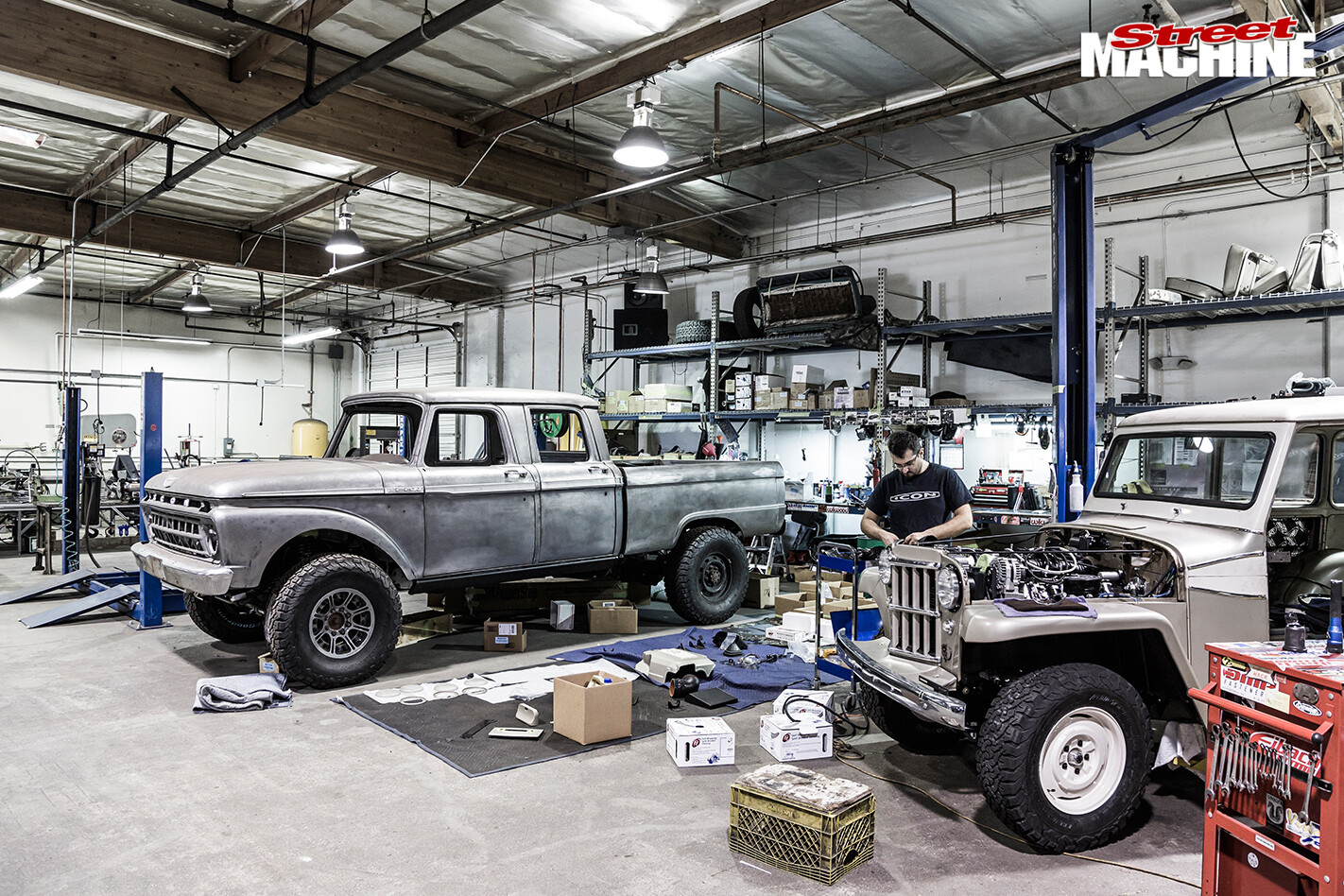 Price-wise, they start at US$145,000 and top out at over a million. If that sounds like a lot of moolah, you’re not on your Pat Malone, but unlike many who have tried before, Ward has hit upon a sustainable business model that allows him to employ a bunch of talented guys and build a heap of cool cars. And we reckon there is a lot to be learned from ICON’s obsession with design and attention to detail that can be applied to home builds – especially in this era when stock-appearing street machines are gaining favour.
Price-wise, they start at US$145,000 and top out at over a million. If that sounds like a lot of moolah, you’re not on your Pat Malone, but unlike many who have tried before, Ward has hit upon a sustainable business model that allows him to employ a bunch of talented guys and build a heap of cool cars. And we reckon there is a lot to be learned from ICON’s obsession with design and attention to detail that can be applied to home builds – especially in this era when stock-appearing street machines are gaining favour.
There is no doubt that smart marketing is a big part of the secret, starting with the way Ward has structured his model range, split between ‘production’ and ‘custom’ builds. The production models comprise the BR (60s Ford Broncos, powered by 5.0L Coyote V8s), the FJ (four different FJ Land Cruiser body styles), and the TR or Thriftmasters – a limited edition of five ’47-’53 Chev pick-ups. The production cars are built to a script, with a list of options for customers to choose from. Just like buying a new car, only a whole lot cooler.
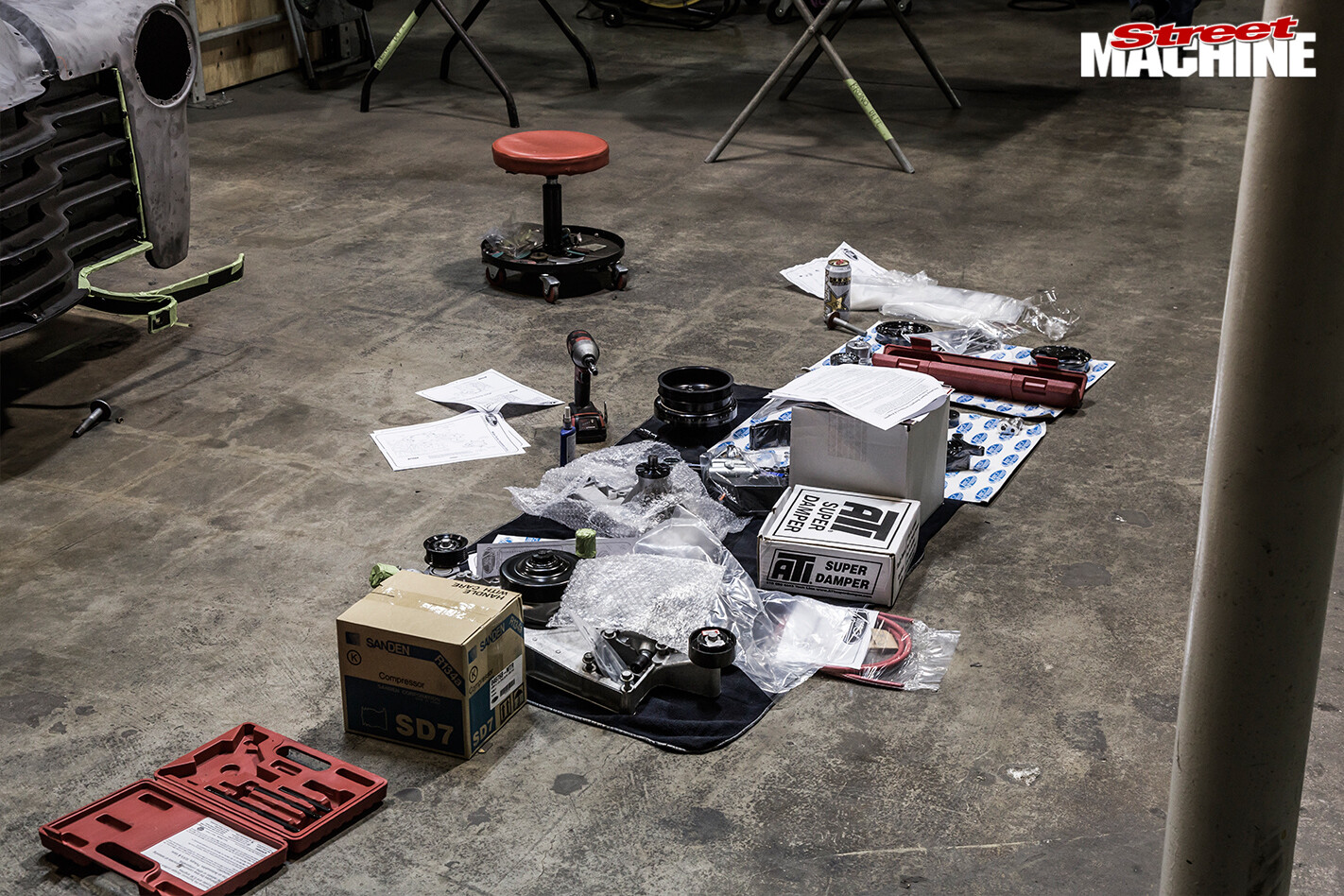 The custom builds come in two flavours, the Derelict range and the Reformer. “The Derelicts are my personal favourite,” Ward says. The patina-encrusted Derelict cars still wear their original paint, with almost everything else restored or upgraded. “We take wabi-sabi, funky, beat-up-looking cars that have really good integrity underneath. We design a new chassis that fits non-invasively under the car and go from there.”
The custom builds come in two flavours, the Derelict range and the Reformer. “The Derelicts are my personal favourite,” Ward says. The patina-encrusted Derelict cars still wear their original paint, with almost everything else restored or upgraded. “We take wabi-sabi, funky, beat-up-looking cars that have really good integrity underneath. We design a new chassis that fits non-invasively under the car and go from there.”
The Reformers, says Ward, are for those who don’t get the patina thing, and are concours-restored to new, but with “modern performance perversions and conveniences” and some subtle stylistic changes. “We take liberties with knobs, switches, mirrors and badging,” Ward says, “which we execute in stainless or aluminium.”
 When it comes to a custom build, nothing is off the table. “The diversity is ridiculous,” Ward says. Completed Derelicts include a ’52 Chev coupe, a ’46 Lincoln, a split-window Kombi and a crazy ’48 Buick Super convertible. In the build are a ’58 Rolls-Royce Silver Cloud, a 1959 Willys Overland wagon and a ’63 Ferarri 250 GTE, and after that will be a Volvo P1800, a Diamond T pick-up, a Hudson Commodore, a ’60 Pontiac Bonneville Catalina wagon and a ’34 DeSoto Airflow coupe. “Each one comes with its own challenges, which is what makes them so much fun,” Ward explains.
When it comes to a custom build, nothing is off the table. “The diversity is ridiculous,” Ward says. Completed Derelicts include a ’52 Chev coupe, a ’46 Lincoln, a split-window Kombi and a crazy ’48 Buick Super convertible. In the build are a ’58 Rolls-Royce Silver Cloud, a 1959 Willys Overland wagon and a ’63 Ferarri 250 GTE, and after that will be a Volvo P1800, a Diamond T pick-up, a Hudson Commodore, a ’60 Pontiac Bonneville Catalina wagon and a ’34 DeSoto Airflow coupe. “Each one comes with its own challenges, which is what makes them so much fun,” Ward explains.
Most of the custom builds are based on Art Morrison chassis set-ups, with independent suspension, and, these days, with Brembo brakes and Fox suspension. Each car scores mod cons aplenty, including high-end sound, air con and ABS, but all of these functions are deftly hidden from view, with the original switchgear modified to control the new stuff.
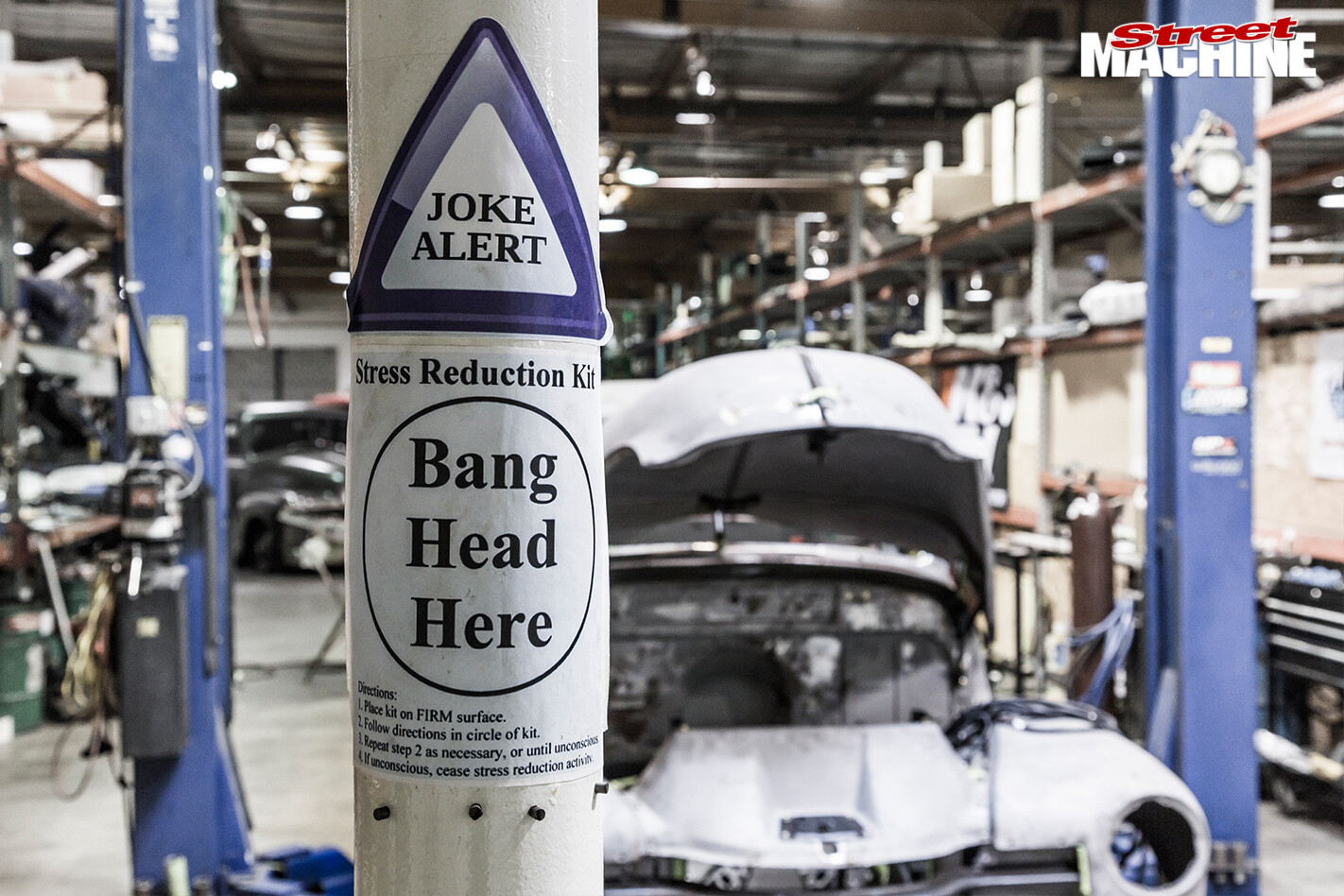 So far, it all sounds like your typical, well-thought-out resto-mod, but what sets Ward’s builds apart is his sense of design and his dedication to finding cool materials. “We geek out on every little detail,” he says. “If you study a car long enough, you start to notice the lighting, the sun visors, the door locks. From there we look at all kinds of different design, including military, aerospace, marine, rail cars and architecture. When you start taking inspiration from that, it becomes a lot of fun and the quality goes way up. The goal is to put it all together in a way that looks like we’ve done nothing.”
So far, it all sounds like your typical, well-thought-out resto-mod, but what sets Ward’s builds apart is his sense of design and his dedication to finding cool materials. “We geek out on every little detail,” he says. “If you study a car long enough, you start to notice the lighting, the sun visors, the door locks. From there we look at all kinds of different design, including military, aerospace, marine, rail cars and architecture. When you start taking inspiration from that, it becomes a lot of fun and the quality goes way up. The goal is to put it all together in a way that looks like we’ve done nothing.”
Ward reckons that the automotive industry lost an important piece of its core quite a while ago – that design stopped being done for design’s sake, and that the push to create something to be the best it can be was set aside in pursuit of lower margins and higher output. “I wanted to take the resto-mod shop mentality out of the Stone Age” he explains. “It’s about finding the balance of bespoke craftsmanship and engineering quality.”
THE THRIFTMASTER SERIES
 The run of five trucks known as the Thriftmaster series will set you back around $US225,000, but Ward has had no problem finding buyers with the readies. ICON starts with a Chevrolet 3100 truck (1945-55, known as the Advance-Design models) and adds a custom-made Art Morrison chassis sporting a triangulated four-link and full independent front suspension, rack-and-pinion power steering and custom sway-bars.
The run of five trucks known as the Thriftmaster series will set you back around $US225,000, but Ward has had no problem finding buyers with the readies. ICON starts with a Chevrolet 3100 truck (1945-55, known as the Advance-Design models) and adds a custom-made Art Morrison chassis sporting a triangulated four-link and full independent front suspension, rack-and-pinion power steering and custom sway-bars.
A stonking 435hp 5.3L LC9 donk, topped by a Magnuson TVS1900 supercharger, is fitted into the confines of the curvaceous front end, and transmission choices are either a Tremec TKO five-speed or 4L65E auto. They meet a Currie nine-inch diff and Strange 31-spline axles under the bed.
The interior is packed full of modern goodies such as air conditioning, a Kenwood/Audison stereo system and even a Wi-Fi hot spot. It’s all the less-obvious details that make the Thriftmaster a rolling artwork: a custom-designed 16-inch steering wheel is wrapped in bison leather, interfaces for audio and air con are hidden inside the dash elements, and there’s even fully custom instrumentation. LED gauges with redesigned layouts and fonts and ceramic-coated brushed nickel trim complement the high-tech ISIS wiring system, which powers a touchscreen with PIN code to start the car as well as the air con and sat-nav.
A lot of design cues were taken from the art-deco style of legendary industrial designer Raymond Loewy, responsible for such things as the Coca-Cola bottle and the Shell logo. Jonathan wanted to integrate a lot of Loewy’s principles and cues into the pieces added to the Thriftmaster trucks to create a unique, improved version of one of America’s most iconic work trucks.
THE HELLION
The most ambitious project ICON currently has underway is a Reformer dubbed Hellion. “We’ve taken a genuine Plymouth Superbird – beat to piss, a trainwreck of a car, but genuine – and we are going to mash it up with a brand-new Dodge Hellcat,” Ward says.
 “One of my design heroes is Mies van der Rohe,” he continues. “He was kind of a rock star of design and architecture – he never did anything automotive, but we thought it would be fun to use some of his concepts in a project.” That might sound a bit highbrow for a muscle car build, but van der Rohe was all about extracting the simple, raw elements of an object and creating a masterpiece of out them – something hot rodders have been doing for decades. He didn’t invent the phrase ‘Less is more’, but he made it famous, and it is not a bad guiding principle when building cars.
“One of my design heroes is Mies van der Rohe,” he continues. “He was kind of a rock star of design and architecture – he never did anything automotive, but we thought it would be fun to use some of his concepts in a project.” That might sound a bit highbrow for a muscle car build, but van der Rohe was all about extracting the simple, raw elements of an object and creating a masterpiece of out them – something hot rodders have been doing for decades. He didn’t invent the phrase ‘Less is more’, but he made it famous, and it is not a bad guiding principle when building cars.
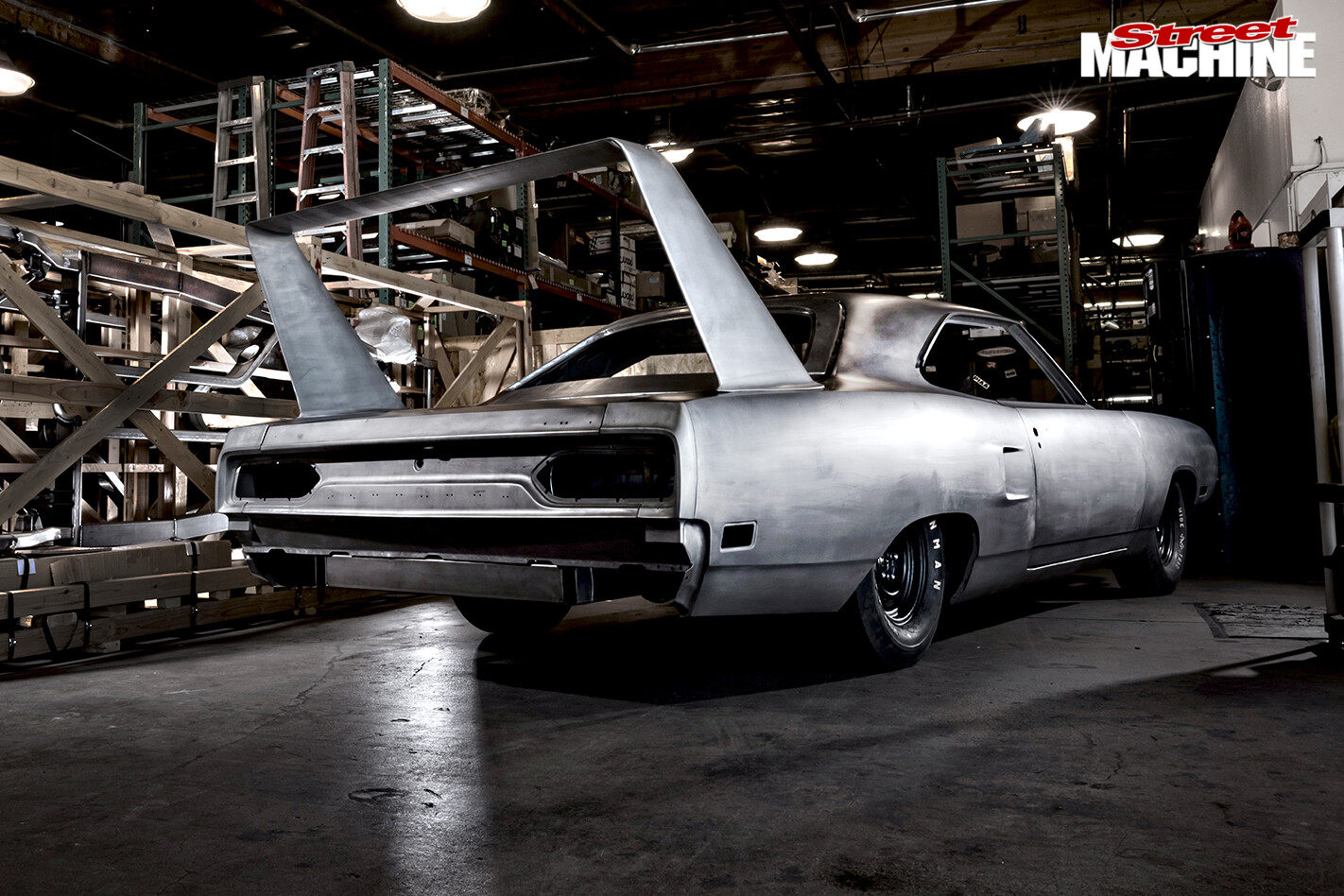 “So we are going to design the interior of the Hellion – the seating, the steering wheel, the console, the lighting, the font on the gauges – through van der Rohe’s design perspective,” Ward says. “It is going to be velvet brown and velvet black matte; it is going to be a nasty, nasty car. We’re going to keep all the driveability and functionality of the Hellcat – the launch control, the ABS brakes, all the electronics – with the look of a Superbird.”
“So we are going to design the interior of the Hellion – the seating, the steering wheel, the console, the lighting, the font on the gauges – through van der Rohe’s design perspective,” Ward says. “It is going to be velvet brown and velvet black matte; it is going to be a nasty, nasty car. We’re going to keep all the driveability and functionality of the Hellcat – the launch control, the ABS brakes, all the electronics – with the look of a Superbird.”
THE DERELICT SERIES
The Derelict series reflects what ICON was already doing – resto-modding and improving an older-style car – but the concept of keeping the exterior looking aged and weathered makes the job a lot trickier.
 The first one built was Ward’s own ’53 Chrysler Town & Country. The cars are first forensically picked apart – panels, exterior pieces, and even interior upholstery is all removed and worked on, restoring full function but not look. The body then undergoes a full CAD scan and the extracted information is sent to chassis guru Art Morrison, who fabricates a new, high-end chassis with improved strength, geometry and mounting points to accommodate such mod cons as power steering and independent suspension – and don’t forget the space for a modern high-performance mill. The droolworthy list of engines currently powering some Derelict projects include a latest-gen 6.1L Hemi V8, top-of-the-line crate LS engines and even a Hilborn-injected Boss 502.
The first one built was Ward’s own ’53 Chrysler Town & Country. The cars are first forensically picked apart – panels, exterior pieces, and even interior upholstery is all removed and worked on, restoring full function but not look. The body then undergoes a full CAD scan and the extracted information is sent to chassis guru Art Morrison, who fabricates a new, high-end chassis with improved strength, geometry and mounting points to accommodate such mod cons as power steering and independent suspension – and don’t forget the space for a modern high-performance mill. The droolworthy list of engines currently powering some Derelict projects include a latest-gen 6.1L Hemi V8, top-of-the-line crate LS engines and even a Hilborn-injected Boss 502.
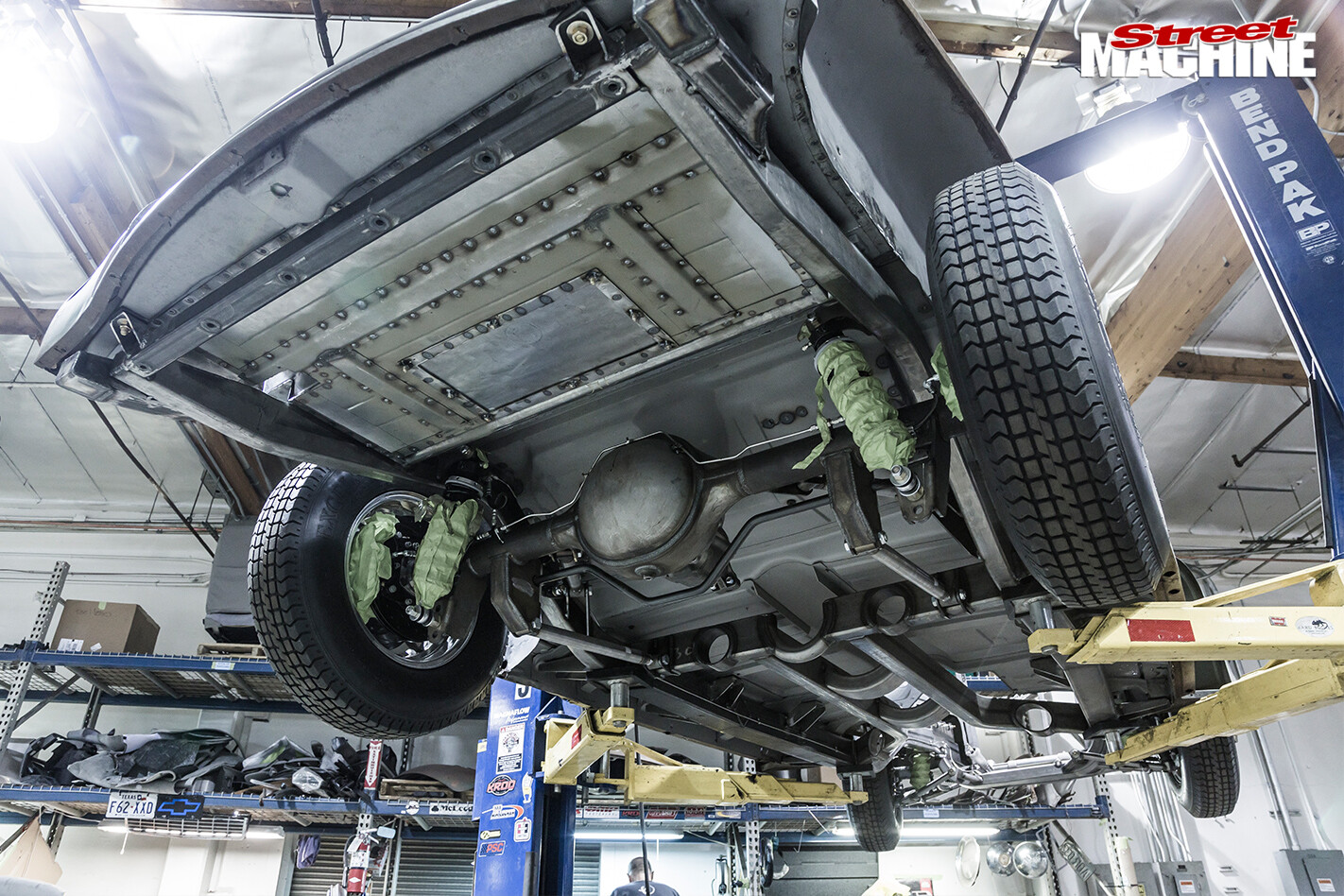 Once the old body is united with the classy new running gear, the interior is assembled with a mix of refurbished original pieces and (if some parts are too far gone) ones made to suit the look of the original design. ICON installs and hides modern equipment like sound deadening, air conditioning and stereo systems, repurposing dash knobs, gloveboxes, and even designing one-off components to make them all functional, but never obvious.
Once the old body is united with the classy new running gear, the interior is assembled with a mix of refurbished original pieces and (if some parts are too far gone) ones made to suit the look of the original design. ICON installs and hides modern equipment like sound deadening, air conditioning and stereo systems, repurposing dash knobs, gloveboxes, and even designing one-off components to make them all functional, but never obvious.
ICON’s approach with the Derelict series is a real tip-of-the-hat to the original designers and builders of these classic cars, but with a look towards the future, providing modern conveniences and serious performance all wrapped in a patina-and-bakelite blanket.
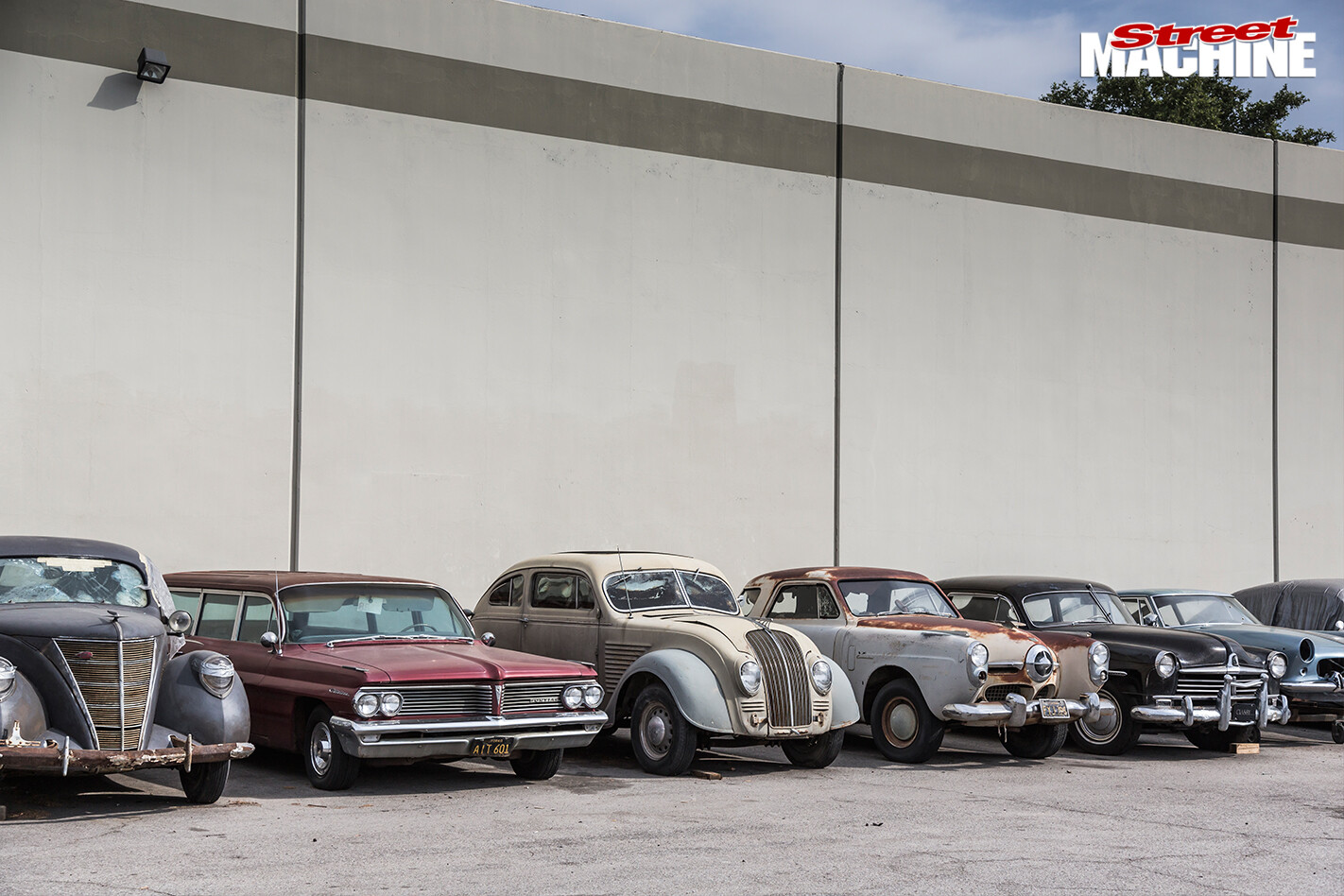 Even with a two-year minimum wait on Derelict projects, every car in this line-up is already spoken for – except for the Pontiac wagon
Even with a two-year minimum wait on Derelict projects, every car in this line-up is already spoken for – except for the Pontiac wagon
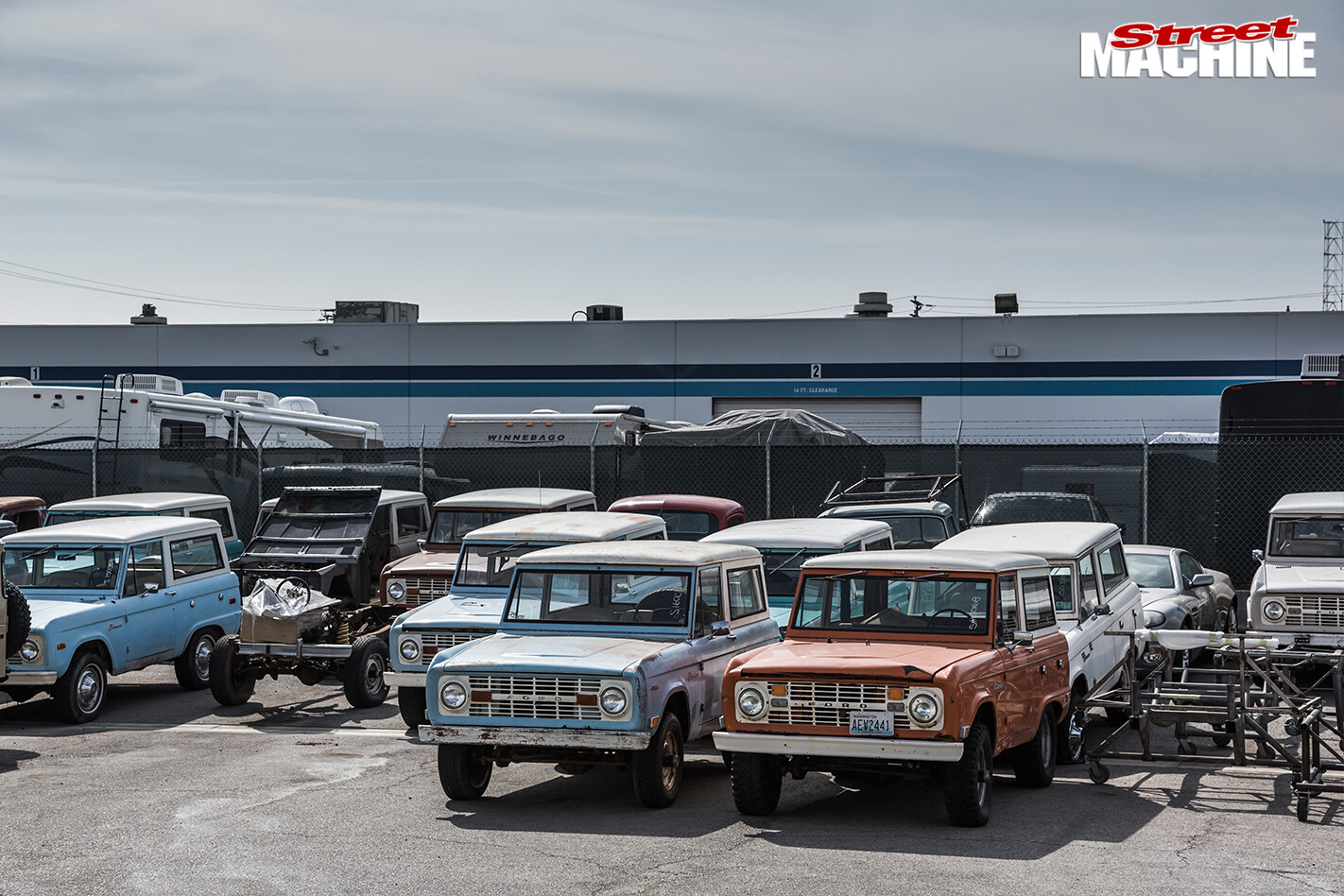 On the other side of the parking lot are rows of retro fourbies ready to be turned into ICONs. Amongst the collection are a few wayward cars such as a Volvo 1200 and an incomplete, stripped Aton Martin destined for a new project
On the other side of the parking lot are rows of retro fourbies ready to be turned into ICONs. Amongst the collection are a few wayward cars such as a Volvo 1200 and an incomplete, stripped Aton Martin destined for a new project
 Gen 3 of the ICON Broncos and FJs sees about 36 new engineering details over the last generation. They’re the first to have a full Brembo brake set-up and come with a Magnuson-blown 6.2L E-ROD LS3 engine, emissions-approved for California. They’ll have bespoke exterior trim, handles, knobs, interior pieces and lightning fixtures
Gen 3 of the ICON Broncos and FJs sees about 36 new engineering details over the last generation. They’re the first to have a full Brembo brake set-up and come with a Magnuson-blown 6.2L E-ROD LS3 engine, emissions-approved for California. They’ll have bespoke exterior trim, handles, knobs, interior pieces and lightning fixtures
 On most workshop floors you might find discarded brake pads and mangled panels, but here you have to be careful not to trip over brand new GM crate motors
On most workshop floors you might find discarded brake pads and mangled panels, but here you have to be careful not to trip over brand new GM crate motors
 This 1958 Rolls-Royce Cloud is destined for Aussie shores as one of ICON’s latest Derelict cars. Normally an Art Morrison chassis would replace the knackered factory one, but thanks to our tricky import and roadworthy laws, they need to build this one up from the stock frame to allow it to be road-registered. It’ll get top-of-the-line LS power, but Jonathan says getting everything to agree is even trickier than you think
This 1958 Rolls-Royce Cloud is destined for Aussie shores as one of ICON’s latest Derelict cars. Normally an Art Morrison chassis would replace the knackered factory one, but thanks to our tricky import and roadworthy laws, they need to build this one up from the stock frame to allow it to be road-registered. It’ll get top-of-the-line LS power, but Jonathan says getting everything to agree is even trickier than you think
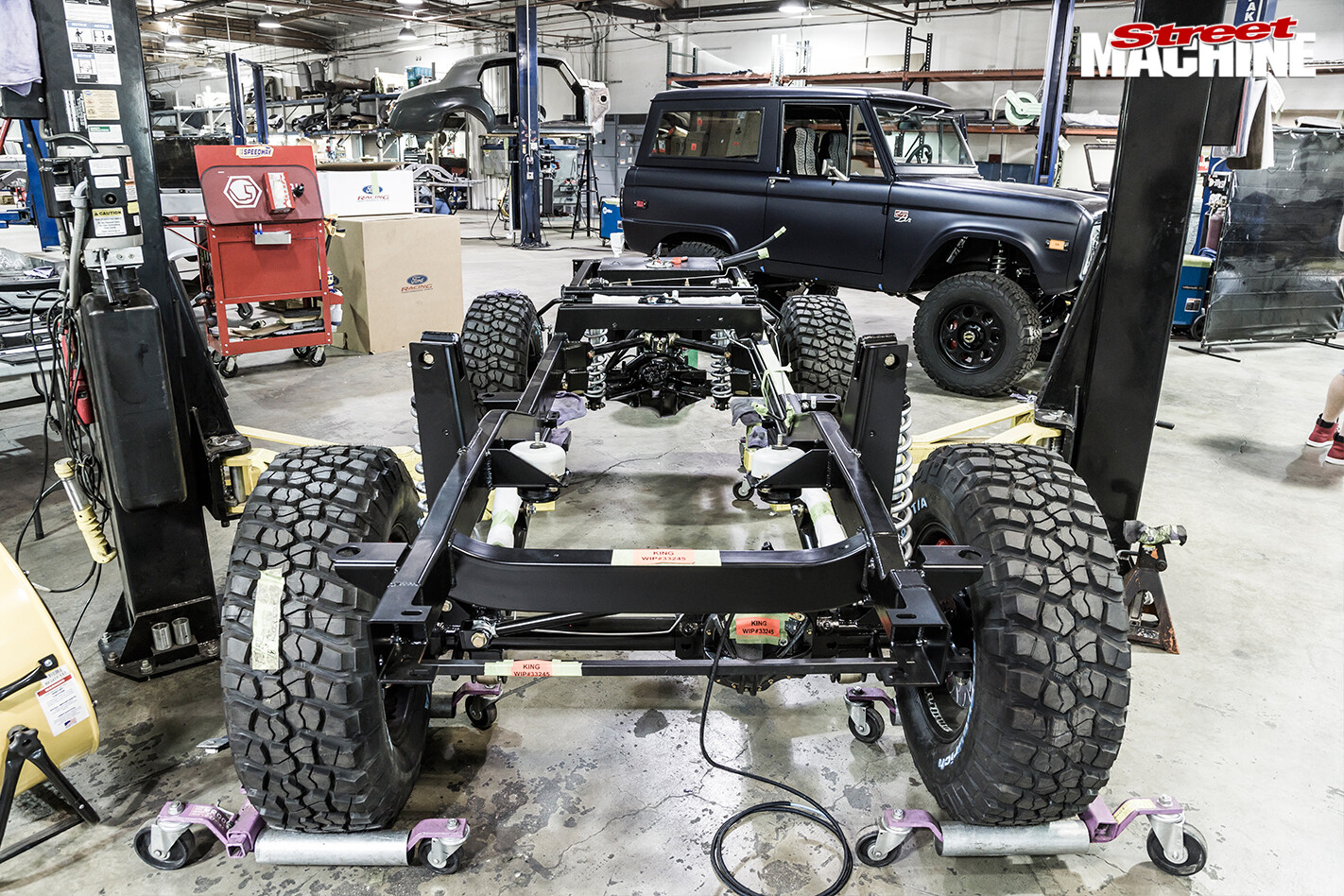 The chassis that are fitted under the 4x4s have some serious engineering prowess. Stronger, lighter and with more reinforcement, they can take a beating off-road. Rolling gear includes upgraded suspension and linkages, Dynatrac differentials and even a full Brembo braking kit
The chassis that are fitted under the 4x4s have some serious engineering prowess. Stronger, lighter and with more reinforcement, they can take a beating off-road. Rolling gear includes upgraded suspension and linkages, Dynatrac differentials and even a full Brembo braking kit
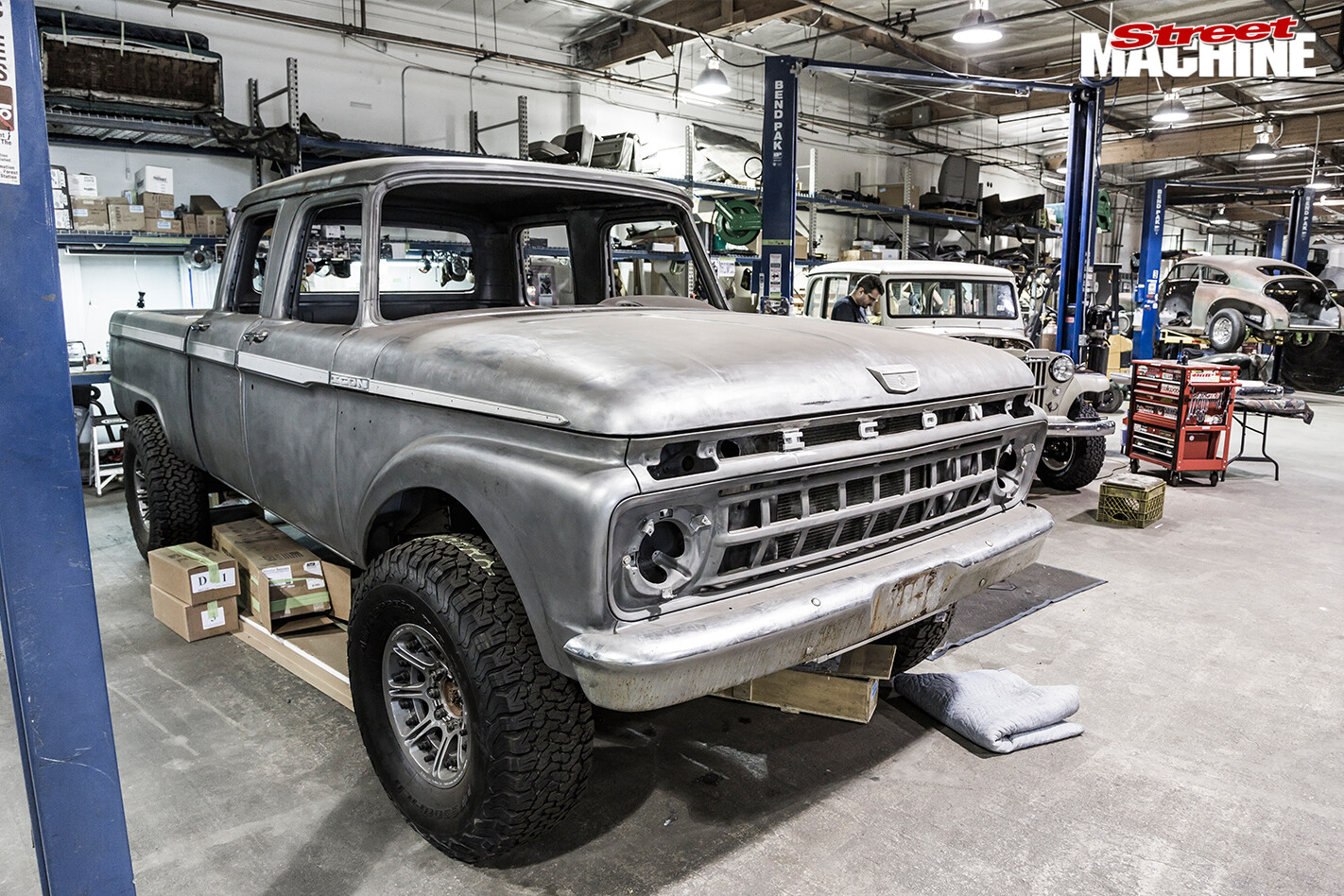 Once all the body work has been done, the cars go through the ‘pre-fit’ stage, where they’re checked to ensure everything lines up before final paint and the fitment of all the goodies. This ’62 Ford F250 crew-cab is close to having life breathed back into it
Once all the body work has been done, the cars go through the ‘pre-fit’ stage, where they’re checked to ensure everything lines up before final paint and the fitment of all the goodies. This ’62 Ford F250 crew-cab is close to having life breathed back into it
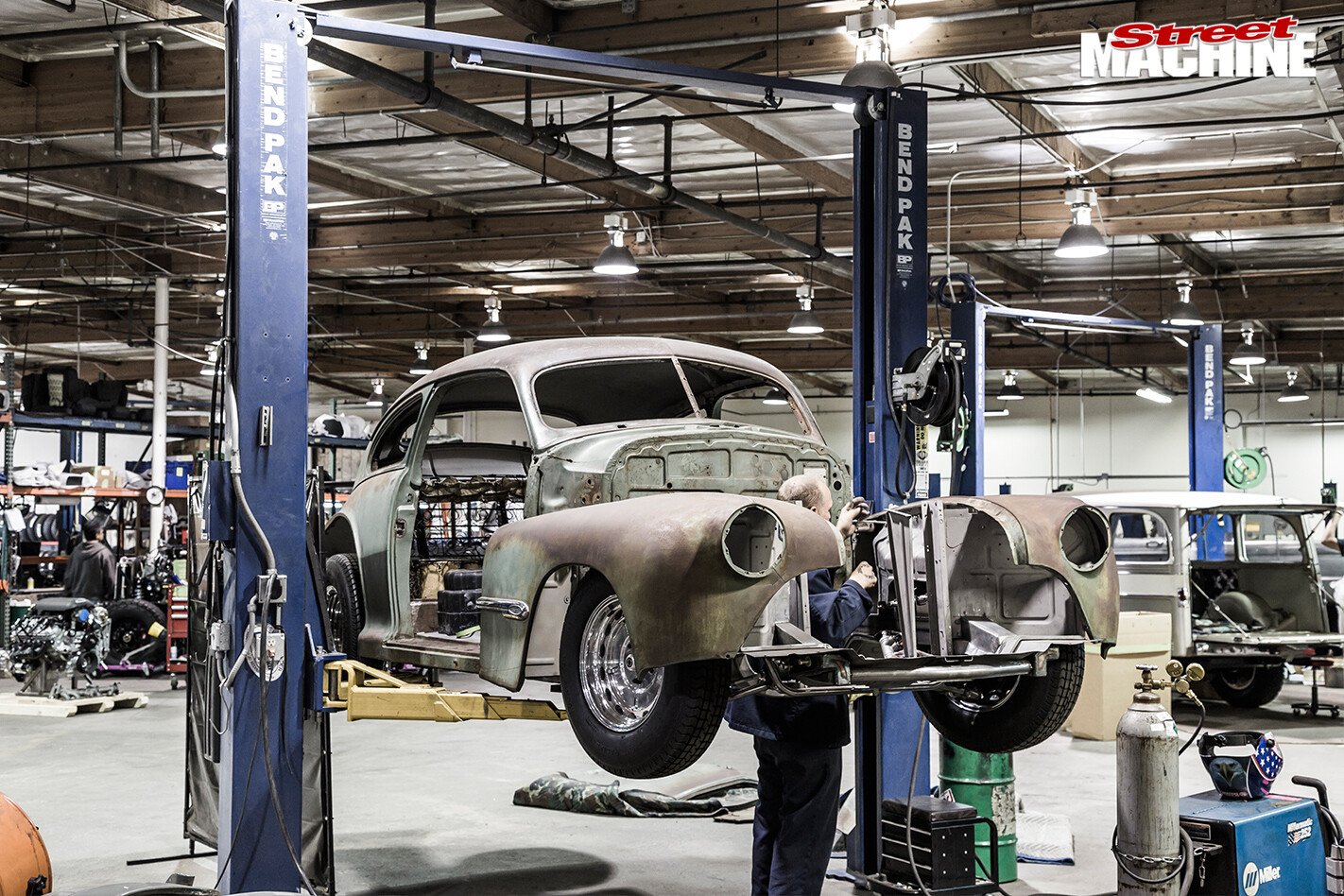 This 1946 Oldsmobile coupe is coming along nicely as a Derelict build. Already treated to an Art Morrison chassis, it’s about to get a Hilbourn-injected Boss 502 dropped in. Those shiny alloys are billet copies of the original artillery-style steelies, but stronger and lighter. They’ll soon receive a patina treatment and the original hubcaps will be put back on and roadgoers will be none the wiser
This 1946 Oldsmobile coupe is coming along nicely as a Derelict build. Already treated to an Art Morrison chassis, it’s about to get a Hilbourn-injected Boss 502 dropped in. Those shiny alloys are billet copies of the original artillery-style steelies, but stronger and lighter. They’ll soon receive a patina treatment and the original hubcaps will be put back on and roadgoers will be none the wiser


Comments